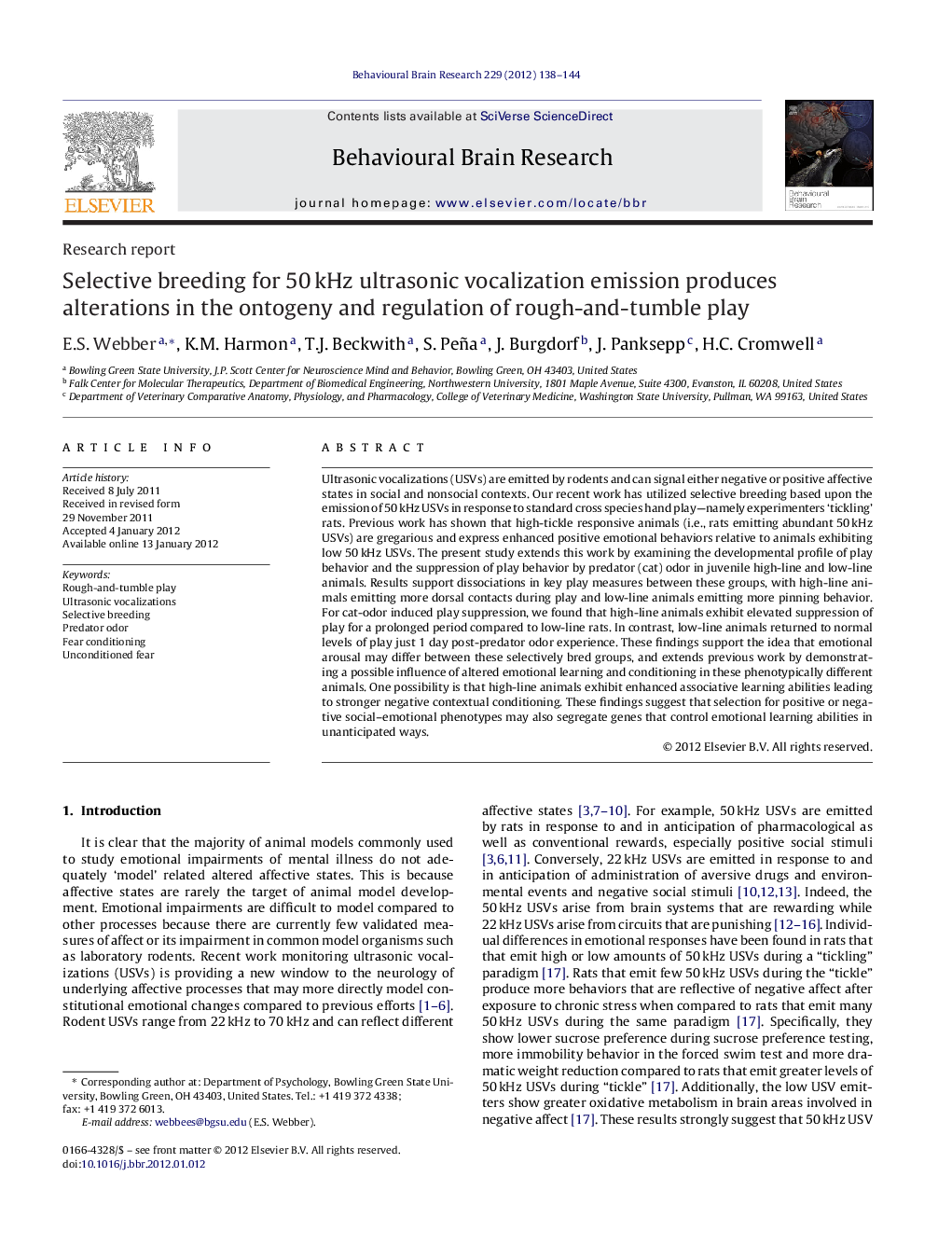| کد مقاله | کد نشریه | سال انتشار | مقاله انگلیسی | نسخه تمام متن |
|---|---|---|---|---|
| 4313354 | 1289994 | 2012 | 7 صفحه PDF | دانلود رایگان |

Ultrasonic vocalizations (USVs) are emitted by rodents and can signal either negative or positive affective states in social and nonsocial contexts. Our recent work has utilized selective breeding based upon the emission of 50 kHz USVs in response to standard cross species hand play—namely experimenters ‘tickling’ rats. Previous work has shown that high-tickle responsive animals (i.e., rats emitting abundant 50 kHz USVs) are gregarious and express enhanced positive emotional behaviors relative to animals exhibiting low 50 kHz USVs. The present study extends this work by examining the developmental profile of play behavior and the suppression of play behavior by predator (cat) odor in juvenile high-line and low-line animals. Results support dissociations in key play measures between these groups, with high-line animals emitting more dorsal contacts during play and low-line animals emitting more pinning behavior. For cat-odor induced play suppression, we found that high-line animals exhibit elevated suppression of play for a prolonged period compared to low-line rats. In contrast, low-line animals returned to normal levels of play just 1 day post-predator odor experience. These findings support the idea that emotional arousal may differ between these selectively bred groups, and extends previous work by demonstrating a possible influence of altered emotional learning and conditioning in these phenotypically different animals. One possibility is that high-line animals exhibit enhanced associative learning abilities leading to stronger negative contextual conditioning. These findings suggest that selection for positive or negative social–emotional phenotypes may also segregate genes that control emotional learning abilities in unanticipated ways.
► Rats were bred for variations in 50 kHz USV emission during “tickle”.
► The ontogeny and suppression of play was examined using cat odor.
► The two lines were opposite in both play expression and suppression.
► Low emitters had fewer play contacts yet weaker play suppression.
► Results provide a novel model of primary and conditioned emotional impairment.
Journal: Behavioural Brain Research - Volume 229, Issue 1, 1 April 2012, Pages 138–144